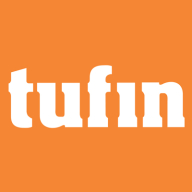


Skybox Security Suite and Tines operate in the cybersecurity landscape, focusing on security management with distinct strengths. Tines stands out in features and ease of deployment due to its automation and integration, whereas Skybox Security Suite appeals with competitive pricing and ROI.
Features: Skybox Security Suite provides threat intelligence, vulnerability management, and network analysis, establishing a secure environment. Tines offers automation, integration, and incident management, reducing manual workload and enhancing efficiency. Tines's automation capabilities offer an advantage for efficiency-focused organizations.
Room for Improvement: Skybox Security Suite could benefit from simplified automation processes and enhanced user interface design to improve user experience. Additionally, expanding integration capabilities with third-party tools could enhance its flexibility. Tines may improve by offering more detailed analytics, expanding platform compatibility, and providing more robust compliance reporting options.
Ease of Deployment and Customer Service: Skybox Security Suite offers a well-defined deployment model with support ensuring a smooth setup. Tines emphasizes simple deployment and robust customer service, making it user-friendly for less technical environments, facilitating smoother integrations.
Pricing and ROI: Skybox Security Suite provides competitive pricing with notable ROI through its extensive security features, appealing to budget-conscious buyers. Tines, although requiring a higher initial investment, delivers strong ROI by enhancing operational efficiencies and reducing manual efforts, appealing to organizations focused on long-term efficiency gains.



Zafran Security integrates with existing security tools to identify and mitigate vulnerabilities effectively, proving that most critical vulnerabilities are not exploitable, optimizing threat management.
Zafran Security introduces an innovative operating model for managing security threats and vulnerabilities. By leveraging the threat exposure management platform, it pinpoints and prioritizes exploitable vulnerabilities, reducing risk through immediate remediation. This platform enhances your hybrid cloud security by normalizing vulnerability signals and integrating specific IT context data, such as CVE runtime presence and internet asset reachability, into its analysis. No longer reliant on patch windows, Zafran Security allows you to manage risks actively.
What are the key features of Zafran Security?
What benefits can users expect from Zafran Security?
In industries where security is paramount, such as finance and healthcare, Zafran Security provides invaluable protection by ensuring that only exploitable vulnerabilities are addressed. It allows entities to maintain robust security measures while allocating resources efficiently, fitting seamlessly into existing security strategies.
Skybox Security Suite provides comprehensive tools for network and firewall compliance, vulnerability management, and change management, with a focus on risk reduction and network optimization.
Skybox Security Suite supports over 130 vendors with massive scalability and seamless integration, notably with Nessus and Qualys. Its features include network path analysis and offline attack simulation, which enhance management effectiveness. Despite its robust offering, improvements are needed in its UI, web interface, reporting detail, and customization. Automation, orchestration, and device policy provisioning require better support, and integration with tools like Rapid7 could be improved. Enhancements in firewall configuration checks, cloud connectivity, pricing, and marketing awareness are also called for, alongside a transition from Java GUI to a consistent web-based system.
What Are Key Features of Skybox Security Suite?Skybox Security Suite is commonly used in industries requiring strict compliance like finance and healthcare. Firms employ it for firewall audits, enhancing network visibility, and managing configurations against standards such as PCI, ensuring security and policy compliance across expansive networks.
Tines automates manual security tasks, incident response workflows, and tool orchestration, enhancing efficiency by reducing repetitive processes and improving response times.
Users leverage Tines to automate complex security and incident response operations, integrating seamlessly with other platforms to streamline tasks. Its no-code automation capabilities and strong security features are particularly valued. While it enhances operational efficiency, users suggest improvements in customer support, documentation, and additional integration capabilities to overcome learning curve challenges. Some mention occasional latency issues and seek more customization, training resources, and clearer pricing structures. Enhanced scalability and detailed error logs are desired for smoother troubleshooting.
What are Tines' most important features?
What benefits and ROI should users look for?
In specific industries, Tines is implemented to automate security operations in sectors like finance, healthcare, and technology, where rapid incident response and integration with other platforms are crucial. Automating complex workflows without code is particularly beneficial in these fast-paced environments.
We monitor all Vulnerability Management reviews to prevent fraudulent reviews and keep review quality high. We do not post reviews by company employees or direct competitors. We validate each review for authenticity via cross-reference with LinkedIn, and personal follow-up with the reviewer when necessary.